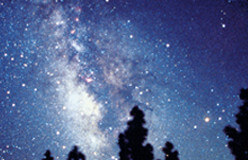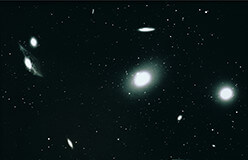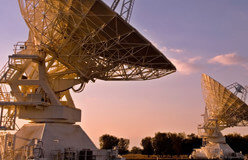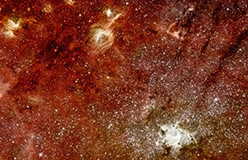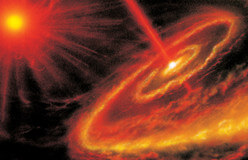Making observations of distant galaxies is a difficult task. One of the biggest obstacles is something you normally can’t see: the air.
Particles in the air can absorb and scatter starlight, while light from cities is reflected and washes out dim objects such as faint stars. Astronomical images are blurred because the air is in motion, and sometimes clouds block our view entirely! The atmosphere interferes in many ways.
Many telescopes are located up on mountaintops, where the air is thinner and clearer, and the city lights are far away. Choosing a good site for a telescope is important for getting clear observations.
Astronauts and cosmonauts of the 1960s were the first to travel beyond the atmosphere and get an unobstructed view. In 1990, the Hubble Space Telescope went into orbit. Many other telescopes have been launched since then. X-ray and gamma-ray telescopes study the hottest and most explosive objects in space. Infrared telescopes study the areas where stars are born. Ultraviolet telescopes study very hot stars. How far will these telescopes see? What will they discover?
